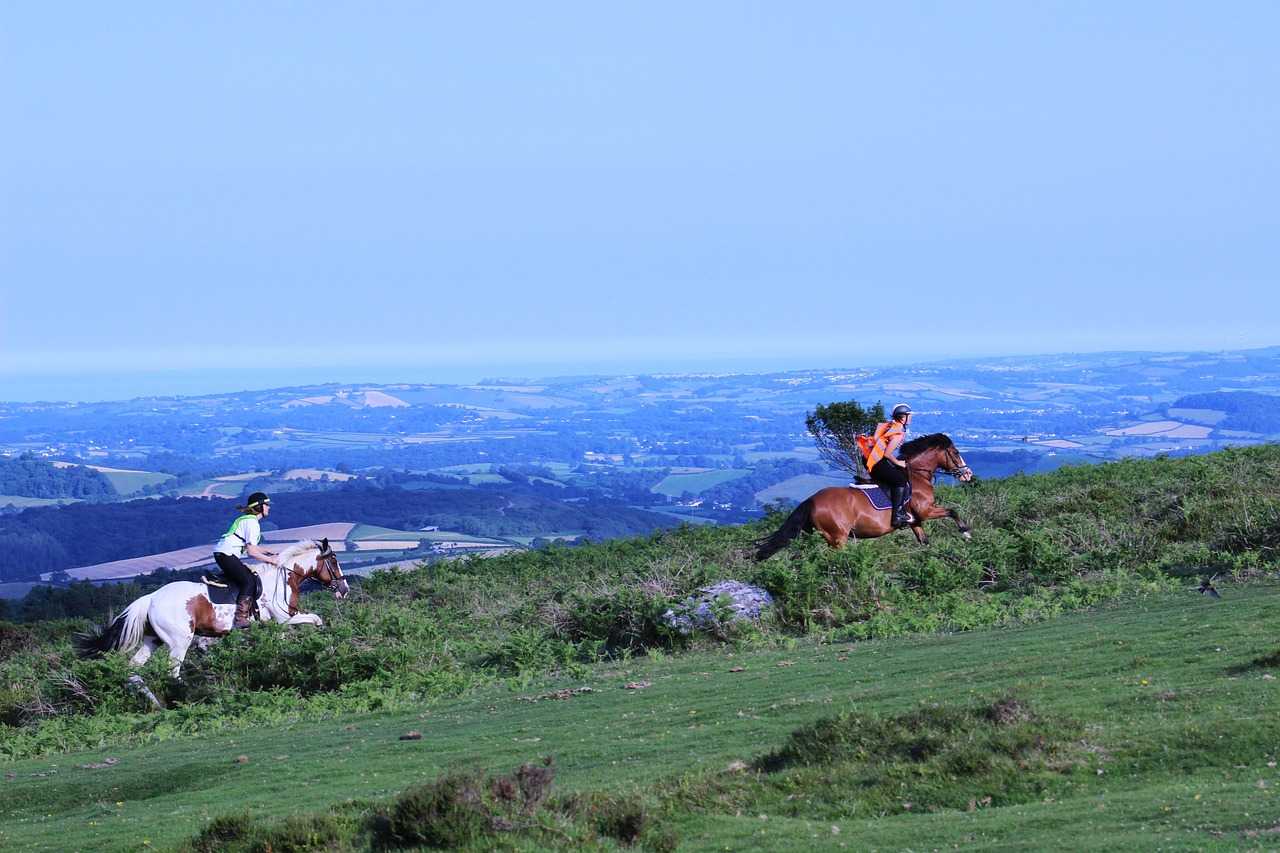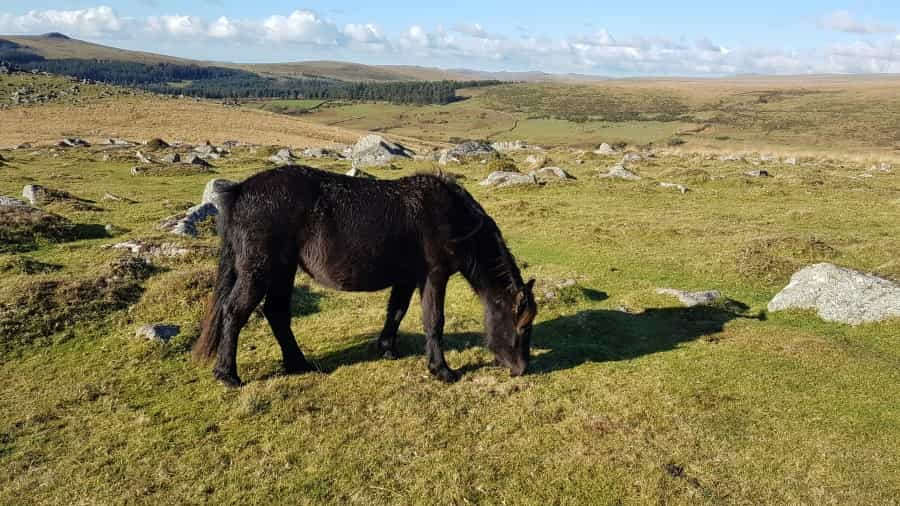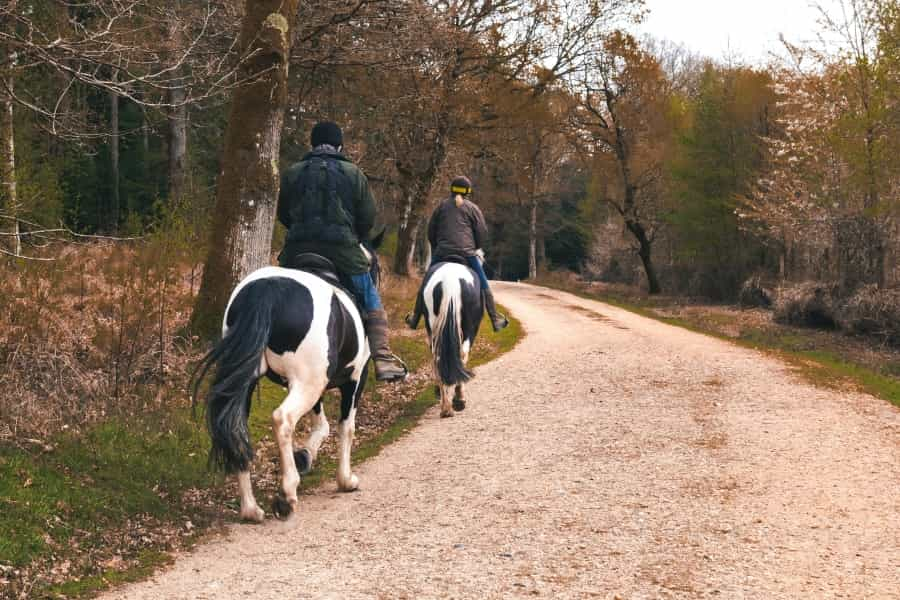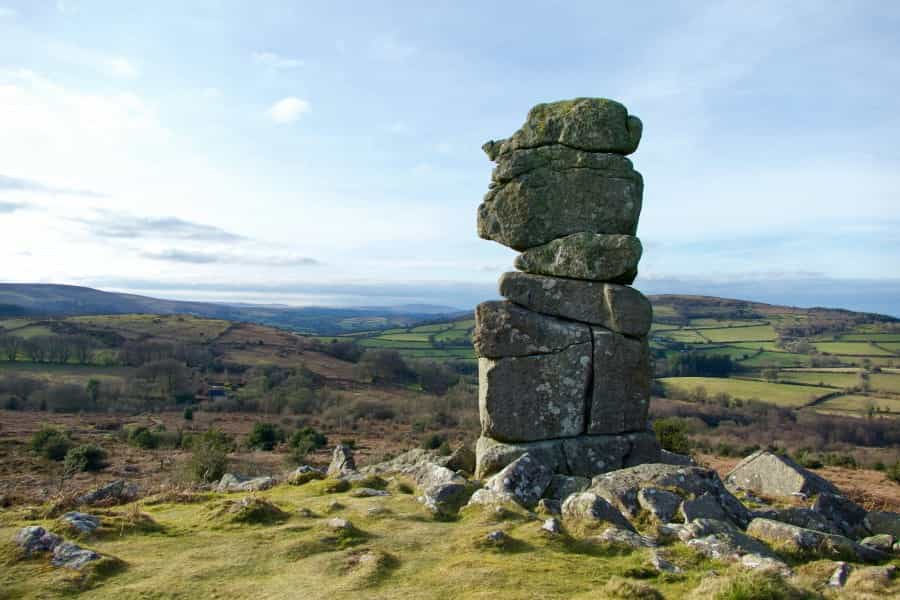Horse Riding in Dartmoor National Park

Dartmoor is a paradise for horse and pony riders – and seeing the spectacularly rugged and remote landscapes while exploring on horseback is very special indeed. Riding is one of the most popular sports in the national park, and there are trails suitable for everyone ranging from complete novices to expert equestrians – you can gallop across spectacular open moorland past rocky tors or take gentle woodland hacks along leafy bridleways. If you don’t have your own horse, or are in need of instruction, several stables offer tuition and experienced guides to take you out trekking.
You can go solo across the moor on horseback or choose to join in group rides; there are also several facilities around the national park offering riding for disabled visitors.
Where can I ride my horse in Dartmoor National Park?
Open access on horseback to 35,200 hectares of common land was granted under the Dartmoor Commons Act (1985), covering much of the open moorland in the national park. You can also follow designated trails, bridle paths and historic byways between villages and towns.
To help you decide where’s best for you to ride, the park is very loosely divided into three areas. Where you choose largely depends on your ability and confidence.
The south-east quarter of the moor
This is probably the ‘easiest’ riding in the park, with gentle slopes and accessible moorland for novices to negotiate. You’ll ride through stunning scenery and there’s a plentiful supply of refuelling stops in the shape of pubs and cafés with tie rails and water for the horses.
The south-west quarter
This is high moorland and more suitable for experienced riders; the centre of the area is blanket bog, so if you’re trekking you’ll need to plan a route around it.
The northern half
Many parts of this wild region are inaccessible due to blanket bog and the presence of the Ministry of Defence’s Dartmoor Ranges. If you intend to ride in this area, plan your route carefully and also check the live firing times before you set off on horseback.
Riding schools and horsey services
There are equestrian centres all across the national park offering tuition on animals matched to your level of ability, guided rides, and livery stables for visitors bringing their own horse or pony.
For something a little bit different, you can also try Western-style riding, or make the guided trek of several days, stopping off at pubs and hotels every night, right across Dartmoor on the Packhorse Track (this one is best left to the experts though!).
Top horse-riding trails on Dartmoor

With hundreds of safe designated trails, multi-use routes and bridle paths, Dartmoor is a treasure trove of discovery for riders. Popular starting points for rides include Postbridge, with its easy access to the moor and granite tors, and Widecombe-in-the-Moor (where there’s a stud that breeds pedigree Dartmoor ponies). Two of our particular favourite rides are listed below.
Burrator Reservoir
Distance: 4.5 miles/7 kilometres
Horse box parking: Quarry car park
The circular ride around gorgeous Burrator (particularly pretty in autumn) offers traffic-free, off-road bridleways through woodland. It's ideal for less experienced riders, and experts can hook up with longer trails leading onto the high moor.
Keep an eye open for traces of abandoned farms along with relics of Dartmoor’s industrial past – former tin mines and the remains of its railway – and pack a picnic to eat at tables around the route. There’s usually an ice-cream van at the car park in summer as well.
The Granite Way
Distance: 11 miles/17 kilometres
Horse box parking: Okehampton station
Almost completely traffic-free and off-road, this is one of the gentler routes in Dartmoor National Park, making it a great starting point for novice hackers looking to gain some long-distance riding experience.
The Granite Way follows a former railway line from Okehampton through wooded valleys, alongside rivers and past local landmarks like Meldon Dam and Lydford Gorge. Several pubs along the way have tie rails and will provide water for the horses.

Riding for visitors with disabilities
In keeping with the park authority’s desire to open up the stunning natural landscapes to all comers, there are a couple of facilities for disabled riders.
-
South West Dartmoor Riding for the Disabled Association (RDA) is a voluntary group enabling people with physical and learning disabilities and autism to ride for both their health and wellbeing. Two groups meet weekly on Tuesday evenings at Fitzworthy Equestrian Centre and there are no age restrictions.
- Another option is Erme Valley RDA, just on the outskirts of the park, where you can organise private lessons as well as group rides.
Safety tips for horse riding on Dartmoor
Dartmoor’s moorland is exposed to the elements and the local weather is always unpredictable. In addition the terrain can be challenging to navigate – two reasons why it’s always recommended to go riding with a local expert who knows the land and riding routes inside out.
What to wear
The following is a list of essential safety equipment.
-
A hard riding hat is mandatory.
-
Comfy boots with small heels are also vital.
-
The weather changes fast on the moor, and the higher your altitude the colder it gets; dress in comfortable, warm jodhpurs or jeans, and layers including T shirts, polo shirts, jerseys and waterproof fleeces or showerproof jackets.
-
Bring a waterproof coat for the top final layer.
-
Carry fly repellant, lip balm and sun cream for summertime treks.
Rules for keeping safe on horseback
With the unpredictable nature of Dartmoor weather and terrain, please bear the following in mind to keep both yourself and your mount safe.
-
Wear hi-viz clothing when you are out riding; in the unlikely event that you do need rescuing, bright colours mean crew on the Devon Air Ambulance will be able to spot you easily.
-
If you come across boggy terrain, cross it at the muddiest point, as this is where livestock cross.
-
Make sure your horse is well-shod. Farriers are few and far between on the moor.
-
Carry a hoof pick (that mud!), penknife, money for the pub or ice-cream van, and a camera/smartphone to capture the views.
-
Fly repellent and a damp sponge should go into your saddle bag in summer.
-
Follow new routes on foot first; that way you’ll know to avoid paths and bridleways that could be awkward to navigate on horseback.
-
Leave any dogs behind when you’re out riding in the national park; sheep and cattle graze the moors and grassland as well as Dartmoor ponies, and it’s hard to control dogs when you’re on horseback. Dogs can also disturb ground-nesting birds during the spring/early summer nesting season.
-
Don’t forget that farmers have the legal right to destroy a dog seen chasing or worrying livestock.

Think about the weather
Dartmoor’s weather is notoriously challenging. Mist can descend over the moorland in minutes and it’s very easy to lose your bearings. Follow a few simple rules and enjoy riding safely on the moor.
-
Take a laminated map and a compass with you if you’re planning on covering any distance. There’s also a useful map available to download with riding routes marked on them. As an added precaution, GPS on your phone is a useful backup.
-
It is often very cold in winter, and too hot in summer for a ride to be enjoyable. – and don’t forget it’s always colder and windier on the exposed hilltops, so take extra layers of clothing.
-
Plan any lengthy rides between April and June or for the autumn months of September and October, where the weather is hopefully at its best – not too hot, not too cold and with less wind.
-
Avoid the areas of central bog, and don’t try to go ‘off piste’ on the moor unless you have good visibility and a guarantee of settled weather.
One of the last great wilderness in the UK, Dartmoor is a paradise for horse riders, as long as you treat its many trails with respect and take sensible safety precautions. If you prefer exploring the national park on two wheels, have a look at Pitchup’s guide to Dartmoor cycling, and when you’re keen to stay firmly on foot, we have some great suggestions for moorland walks.
If you’re looking for somewhere to pitch your tent between outdoor activitie, browse Pitchup’s selection of Dartmoor campsites.